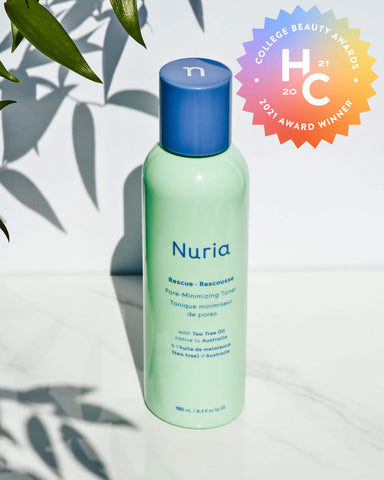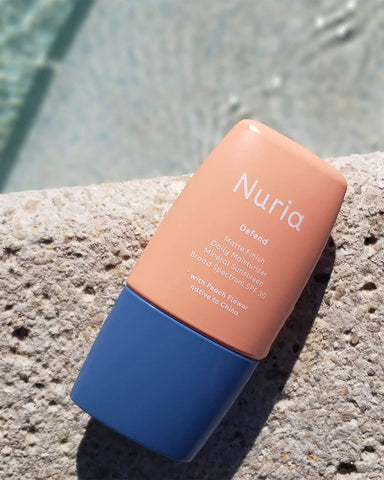
Skincare Dieting: Doing More with Less
Calling all skincare gluttons! We all know the feeling when our cravings for products are greater than our needs, and we’re satisfying the urge to binge while not necessarily improving our skin. That’s when it’s time for a skincare diet! Similar to an elimination diet, a skincare diet is a way to find which ingredients we tolerate best, while cycling through fewer products overall. Even though there are beauty influencers out there with thousands of followers and perfect glass skin with over 20 steps in their routines, it's important to remember that you shouldn't follow someone else's skincare needs, you should follow yours!
Just as we can’t all pull off winged eyeliner, blunt ends, and skinny jeans, we also can’t all use the same skincare products. So if you’re sensitive-skinned or just feel “meh” toward a less-is-more style, trust that you won't be selling your skin short. On the contrary, many of the world’s leading dermatologists swear by skincare dieting—let's explore why!
The art of skincare dieting
The extent of scaling back on products is relative for everyone. That’s where skincare dieting can get confusing: knowing which products to stop.
After all, it’s well-understood that the standard regimen includes multiple products, each with different active ingredients. The challenge is knowing which pairings are safe for daily use, versus which ones are better off being cycled periodically. These occasional-use treatments, like peeling masks and ampoules, are for targeting specific skin needs which constantly change “due to environmental factors, age, hormones and other health-related issues," explains Michele Green, M.D., a New York City-based board-certified dermatologist. But what doesn’t change is the bare structure of your core routine, consisting of the fewest products possible.
So, the takeaway here is that a skincare diet involves two steps: the first is creating a minimalist routine as your daily base; the second is sprinkling in some specialty “guest products” into the cycle as needed.
A simple skincare combo
Your go-to familiars create your safe-base skincare routine. In this case, you’re only using the bare essentials: a gentle cleanser, a moisturizer, and a sunscreen, suggests Dr. Emily Newsom, a board-certified dermatologist at Ronald Reagan UCLA Medical Center.
Using active ingredients on a skincare diet
Another rule of thumb is to avoid building a daily routine that collectively includes more than two aggressive active ingredients. For example, a common daytime routine may include a Vitamin C serum and a moisturizer containing niacinamide. That's absolutely fine! In this case, you’re combining the free radical protection and brightening effects of Vitamin C (a potent antioxidant) with the exfoliating and hydrating action of niacinamide (a milder nutrient).
Keep in mind, however, that sometimes even two active ingredients in the same regimen can be too aggressive for some skin types, explains Dr. Temitayo Ogunleye, an assistant professor of clinical dermatology at the University of Pennsylvania Perelman School of Medicine. Even though niacinamide is considered a gentle active, it might not be so “skin-friendly” when paired alongside other harsher actives. So when building your minimalist routine, “Be sure to add just one product at a time.” Dr. Newsom says.
How to combine active ingredients
The safest way to combine active ingredients is to follow this rule: pair one potent active with other calming, non-irritating actives. Examples of these combinations may include a retinol with hyaluronic acid, lactic acid with a humectant, or glycolic acid with a ceramide. The idea behind these pairings is that the secondary or co-starring active ingredients should act as damage controllers (sidekicks that soothe, moisturize, and repair skin), supporting the recovery process after the abrasive action of the main active ingredient.
A bare minimum skincare diet
Worst case scenario, our skin may need an even stricter diet: no harsh actives whatsoever! This type of skincare diet is ultra minimalistic—meaning we’re only using natural, super-friendly formulas that won’t cause irritation and will support our skin’s dermal barrier.
Examples of these ingredients include fatty botanicals, soothing emulsifiers, and fermented extracts—all which enhance our skin’s natural defenses, according to a report in Molecules medical journal. Eastern beauty traditions love this slow-and-steady approach, which supports our skin’s ability to self-repair, rather than hijacking its healing process with retinoids or alpha hydroxy acids (AHAs).
How to introduce new products in your skincare routine
Once you’ve built your skincare safety net, you can get flashier with extra treatments (without breaking your diet!). Similar to skincare cycling, you may occasionally introduce guest star products as needed, only when your skin has reached an optimal state, suggests Dr. Newsom. This optimal state means that you’re not experiencing breakouts, redness, dryness, or any other signs of an unhealthy dermal barrier.
“You can think of your skin barrier like a brick wall put together with mortar between the skin cells,” Dr. Newsom says. “In sensitive or sensitized skin, that mortar has been weakened and is more permeable.” That's why if we over-correct a skin concern with too many abrasive ingredients, we can cause hyper-reactivity, which worsens the problem and potentially introduces new complications such as broken capillaries, cystic acne, and eczema.
Skin care dieting with multitasking products
Practice safe skin care with the multitasking method! This type of skincare diet uses products that target multiple skin concerns at once, thereby shrinking your routine from five products to perhaps two.
Toners can be great multitaskers! Nuria’s Rescue Pore-Minimizing Toner, for instance, doubles as a makeup remover and triples as a daily exfoliant! Or you can scale down even further by skipping the toner completely, and instead, follow your cleanser with the Matte Finish Daily Moisturizer with All-Mineral SPF 30. It covers all your beauty bases: for UV protection, there’s titanium dioxide and zinc oxide; for toning, lemon balm; to calm your complexion, willowleaf magnolia flower; for hydration, glycerin; and finally, for anti-aging, peach flower and euphrasia.
As you can see, it’s possible to enjoy a full spectrum of skin care with a mere two products. Clever, right?!!
Skin dieting isn’t for everyone. There will always be those genetic outliers with skin that’s thick, flawless, and virtually invincible. Lucky them! But for the rest of us, who don’t have superhuman collagen or pores of steel, our skin is truly best treated with fewer products. The end goal, after all, is training our skin to self-repair at its highest potential… and as the saying goes, “Don’t mess with a good thing!”
About the author, Jasmin Figueroa
Jasmin is an accomplished formulation scientist and skin health expert who has spent her career listening to consumers and developing products that rock. A founding member of the Nuria community, she loves traveling with her family, chilling with her friends at the beach, and will totally judge you if you don’t wear SPF.


